Location :
An inevitable and unavoidable location into the tourist map of south India, the city of Mangalore which is well-known as a pilgrim centre has a number of prominent and sacred temples, one of which is Shri Sharavu Mahaganapati temple. The temple is located in the heart of the city and easily accessible. It is an exceptional religious place having a great history of more than 800 years. Shri Sharavu Magaganapathi temple is a hub for a range of cultural activities like dance and drama performances, Yakshangana, and also for a number of social and cultural activities. It is situated in the heart of the city at Sharavu Temple lane in K.S.Rao Road,
Large numbers of devotees throng to this temple during the special auspicisous festival like Ganesh Chaturthi and Samakranthi. Sacred Darshana of the deity is a blessing for the visitors. Other famous attractions in the temple are Rathothsava and Deepothsava or 'Festival of Lights', celebrated with much enthusiasm and piety.
It is one among the ancient temples of Dakshina Kannada District. The story of its origin and importance of the temple is narrated in the Skanda Purana. This temple was built in the 12th century by Tuluva King Veerabahu. The Shrine of Lord Sharabeshwara is located on the western side of the temple and that of Mahaganapathy is on the south. Yakshagana Thalamaddale takes place every Sunday evening. Poojas and Gana Homas are also performed as sevas.
Significance of the temple
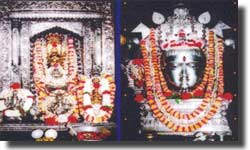
In the middle of the forest, the Tulu king saw a tiger and a cow standing close to each other and thought that the tiger was about to attack the cow. The king shot an arrow at the tiger but unfortunately it killed the cow instead. Upset at this incident of gohatya, the king ran to sage Bharadwaja for a remedy for this sin.
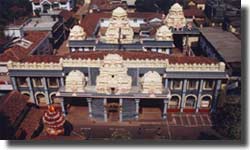
The Shivalinga that would be installed at the spot would be known as Sharabeshwara and the tank would be called Sharabeshwara Thatak. Then the king had to construct the sanctum-sanctorum, mukhamantap, paulis and the gopura. Sage Bharadwaja himself would install the Shivalinga. The king, in order to please Lord Shiva, had to feed one lakh Brahmins. The sage told the king that the deity Sharabeshwara would now be called as Kashi Vishwanath Himself.
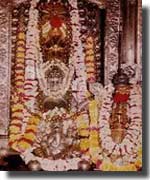
Veerabahu decided to stay at Sharapura for sometime with his wife. During this period, the chieftain of Gangawadi (now known as Bangadi) Chandrashekhar Jain was harbouring hatred towards VishnuVardhan, the Hoysala king, as he had deserted the Jain faith and converted himself into a devotee of Lord Vishnu.
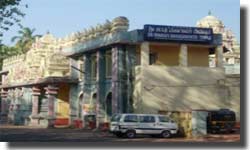
One day, Goddess Mangala Devi appeared in a dream to Bangaraja and told him to look for a stone idol to the west of Goraknath Ashram. She instructed him to construct a temple at that spot and name it Mangala Devi. She also ordered him to name the area between Sharavu and Mangala Devi as Mangalapur.
Time to Visit
Annual festival in April which is celebrated during Ganesh Chathurthi in September and Laksha Deepothsava in November is the best time visit.
Other places to Visit
| Other Places of Interest which include Seemanthi Bai Government Museum, Mahatma Gandhi Museum, Milagres Church, Albuquerque Tile Factory, Summer Sands Beach Resort, Fernandes Cashew Factory, The Souza Cashew Factory, Heritage Homes and many more. There are good accommodation facilities which are found in and around the Mangalore city for the tourists to stay and enjoy the city with all its attractions like temples, Museums, parks, etc. | Nearby tourist places to Shri Sharavu Mahaganapathi Temple
Agumbe Kudremukh Mangalore |
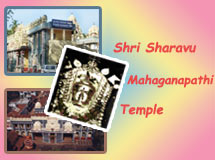 |
How to Reach the Temple
- Auto rickshaws are the major transportation inside the Mangalore city. One can also hire taxis and buses to reach the attractions and roam around in the city.
- By Railways- Mangalore is a major railway station and is conveniently connected with all the major Indian cities. There are a number of passenger and superfast trains which start from and terminate at the Mangalore station.
- By Road - the city of Mangalore is well connected by roads to other cities in Karnataka. State transport buses and private operators provide regular services to cities within and outside the state.



